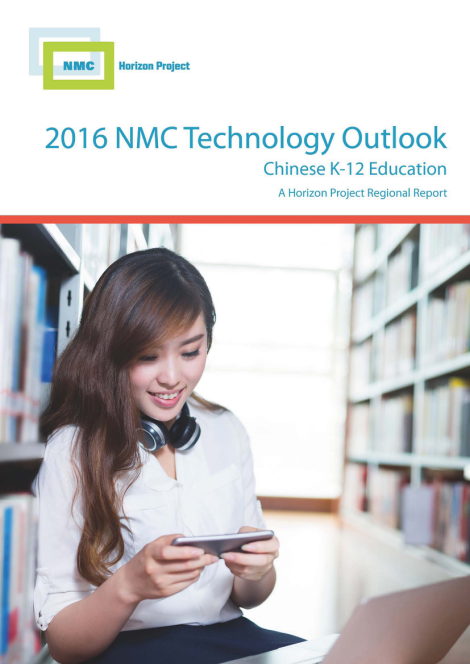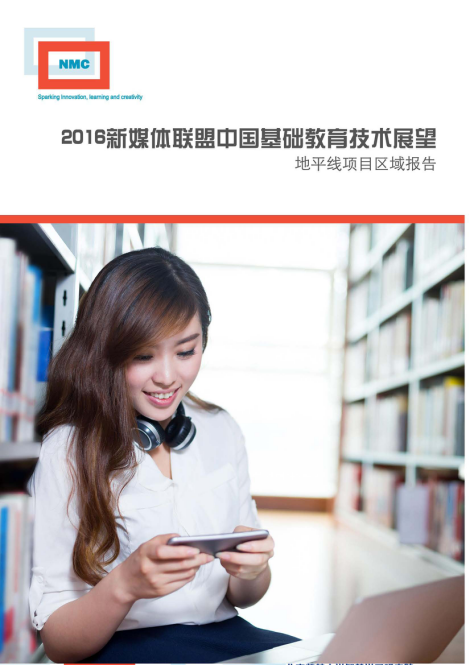The 2016 NMC Technology Outlook for Chinese K-12 Education: A Horizon Project Regional Report (Chinese & Englsih version)
The 2016 NMC Technology Outlook for Chinese K-12 Education: A Horizon Project Regional Report reflects a collaborative research effort between the New Media Consortium (NMC) and the Smart Learning Institute of Beijing Normal University to inform Chinese school leaders and decision-makers about important developments in technologies supporting teaching, learning, and creative inquiry in K-12 education across the country.
All of the research underpinning the report makes use of the NMC's Delphi-based process for bringing groups of experts to a consensus viewpoint, in this case around the impact of emerging technologies on teaching, learning, or creative inquiry in Chinese K-12 education over the next five years. The same process underlies the well-known NMC Horizon Report series, which is the most visible product of an on-going research effort begun 14 years ago to systematically identify and describe emerging technologies likely to have a large impact on education around the globe.
The 2016 NMC Technology Outlook for Chinese K-12 Education was produced to explore important developments in technology and forecast their potential impact expressly in a Chinese context. In the effort that took place from July through October 2015, a carefully selected panel of experts was asked to consider hundreds of relevant articles, news, blog posts, research, and project examples as part of the preparation that ultimately pinpointed the most notable technology topics, trends, and challenges for Chinese K-12 education over the next five years.
Known as the 2016 Horizon Project China Expert Panel, that group of thought leaders consists of knowledgeable individuals, all highly regarded in their fields. Collectively the panel represents a range of diverse perspectives across the K-12 education sector. The project has been conducted under an open data philosophy, and all the interim projects, secondary research, discussions, and ranking instrumentation can be viewed at china.nmc.org. The precise research methodology employed in producing the report is detailed in a special section found at the end of this report.
The expert panel identified nine key trends, nine significant challenges, and twelve important developments in educational technology. Each of the twelve developments in educational technology are profiled on a single page that describes and defines the technology and are ranked as very important for Chinese K-12 education over the next year, two to three years, and four to five years.
Every page opens with a carefully crafted definition of the highlighted technology, outlines its educational relevance, points to several real- life examples of its current use, and ends with a short list of additional readings for those who wish to learn more. Preceding those discussions are sections that detail the expert panel's top ranked trends and challenges, and illuminate why they are seen as highly influential factors in the adoption of technology in Chinese schools over the next five years.
The three key sections of this report constitute a reference and straightforward technology -planning guide for teachers , school leaders, administrators, policy makers, and technologists. It is our hope that this research will help to inform the choices that institutions are making about technology to improve, support, or extend teaching, learning, and creative inquiry in Chinese K-12 education. Educators and administrators worldwide look to the NMC Horizon Project and both its global and regional reports as key strategic technology planning references, and it is for that purpose that the 2016 NMC Technology Outlook for Chinese K-12 Education is presented.



